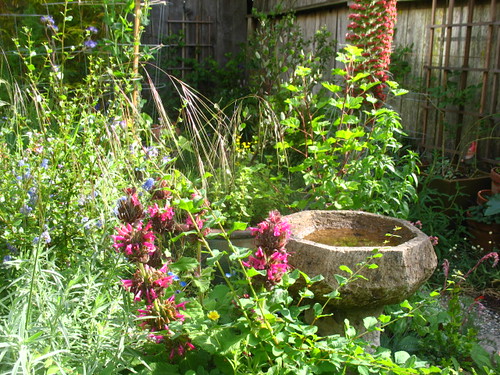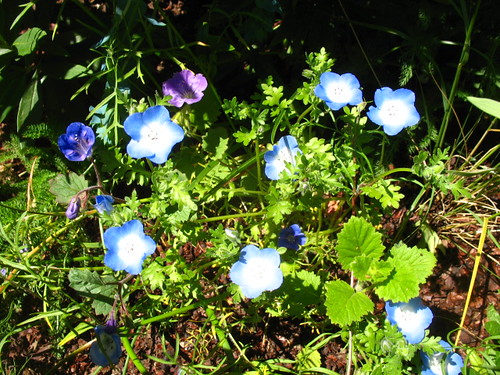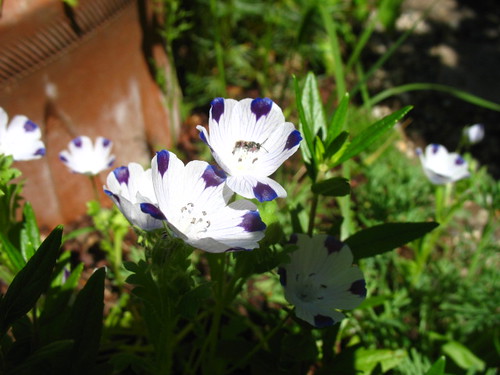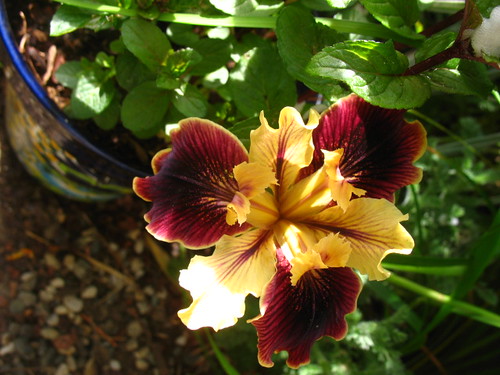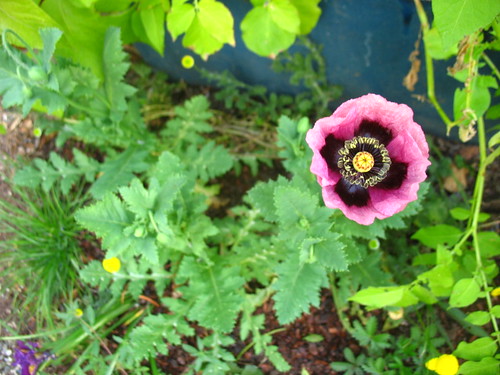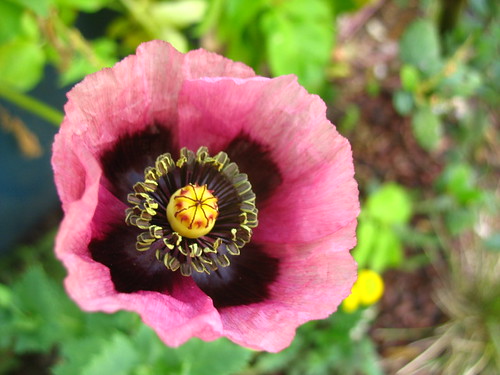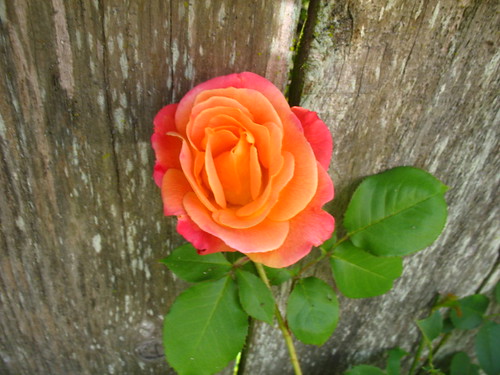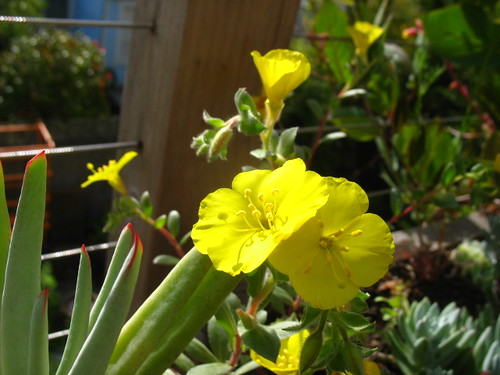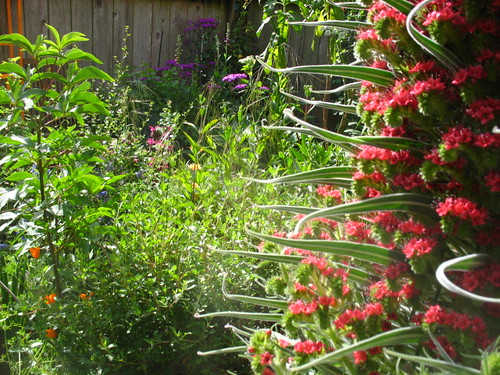More pictures of
Echium wildpretii, as requested.

May not look like it from the picture, but this one obstructs the path. You have to push it out of your way to get through the garden. Or you can reach around from behind and use a leaf on the other side like a handle to pull it out of your way. But that often breaks the leaf.
I painted my tomato cage orange. 'Crushed Orange', in fact. I think it will look groovy later in the season, stuffed full of green vines and red fruit.

Also groovy: these recent acquisitions. I bought these curly iron stakes/posts at the Ruth Bancroft Garden for $28 each. I'm thinking they'll provide some good, all-season interest.
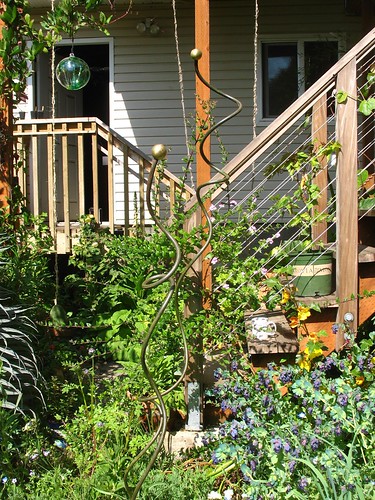
Another view.
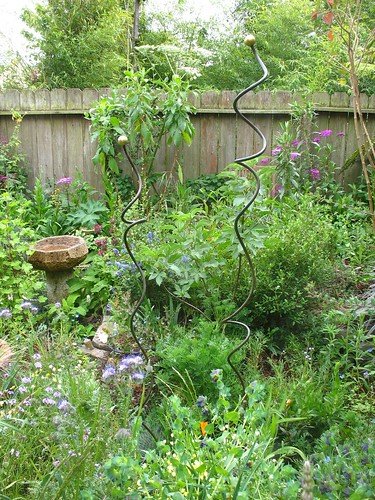
They're obviously meant to support vines, or possibly tomatoes. Or even dahlias. Well, you get the idea. I don't have a plan for them yet, but I might use them for snap peas and nix the bamboo tee-pee.

There are two reasons for this: 1) I am not very good at building garden structures and this tee-pee is incredibly lame, and 2) Some of the snap peas are really weak and maybe I should start over.
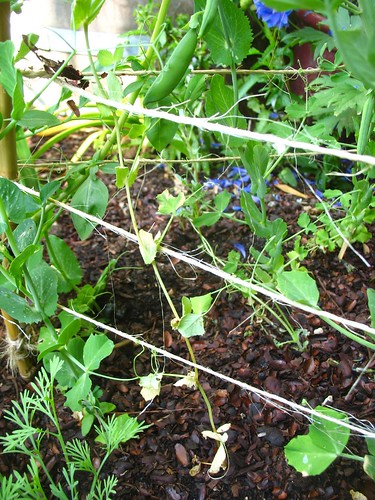
About half of them look like the one above, and the other half look like the one below.

Half of the snap peas grew from seed that came from John Scheeper's and the other half from Territorial. I try to keep track of all that when I plant out, but that doesn't always happen. Now I can't be sure which is which, but I have to suspect the bad ones came from Scheeper's because I've always had good results with Territorial, whereas I'm trying Scheeper's for the first time this year.
But back to Echium + new acquisition. This is the my other
Echium wildpretii. I grew dozens from seed and gave most of them to the Botanical Garden (where they were either sold or lost). I planted four of them in my own garden, but today I just have two. Invasive biennials, I should have
many volunteers after these die. Assuming that's true, and depending on where they come up, I'd like to keep three for next year, if possible.

Some of the flowers are already starting to die, but far more new flowers are opening every day. I would guess this one's running at 50% of its maximum bloom capacity. Stay tuned.
I'm developing a fascination with Trident Maple (
Acer buergerianum).

Individual specimens are variable; this one has pretty pink leaf margins.

It's for my client. I'm going to plant it in her front lawn which she is not terribly fond of.

I would guess most professional gardeners plant out trees from large boxes, but I don't have a truck or a crew to do that with, so I'm planting out from a 2-g pot. This way, too, I hope the growing tree won't need those annoying tree stakes that stay in the ground for 2-3 years while the roots get established. (Ick.)
Anyhow, I've been buying up
A. buergerianum for myself, whenever I can find them as bonsai starters (not shown). I'm not going to bonsai them (not sure what I'm going to do with them in fact) but I think bonsai starters (essentially rooted cuttings) must the cheapest way to buy trees--after tax, it's generally $4 or $5 for 3" or 4" pot, respectively.
Lone Pine Gardens, located in Sebastopol, CA, supplies many Bay Area nurseries with bonsai starters. Whenever I visit a nursery I always check the bonsai section to see what's available.
For example, the other day I bought this coast redwood (
Sequoia sempervirens).
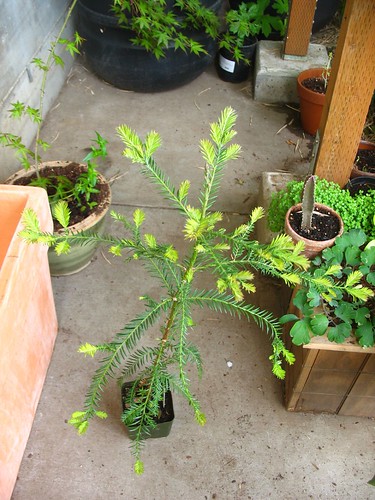
I'm going to put it in this container, also a recent acquisition (marked 20% off!), to grow in the shade under my deck.

I know redwoods can be hedged, and I know they will live in containers for at least a few years...we'll see what happens.
Also recently purchased as bonsai starters, my other current fascinations, Cork Oak (
Quercus suber and variegated English boxwood (
Buxus sempervirens):
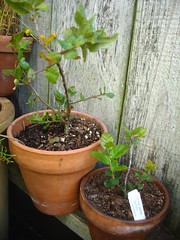
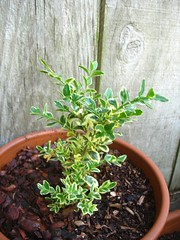
Despite most of what's shown above, I grow a lot of California native plants in my garden. But I'm trending more and more in a Mediterranean direction. I see a lot of dwarfed cork oaks and boxwood topiaries in my future.
Another mediterranean combination I'm just getting around to,
Aeonium 'Schwarzkopf' and
Heianthemum nummularium:

Yellow is more common with the dark aeonium, but I love orange. These are potted plants that I'll put out in the fall when I have room to plant.
Speaking of the California natives, this is still good time to see spring wildflowers in my back 40. Cream Cups (
Platystemon californicus) are especially nice right now.
In the morning the flowers are closed and remind me of little balloons.
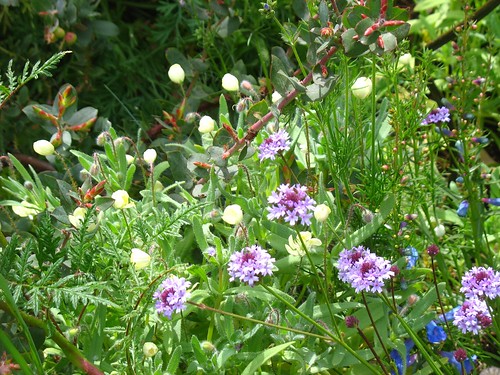
Later, in full-sun:
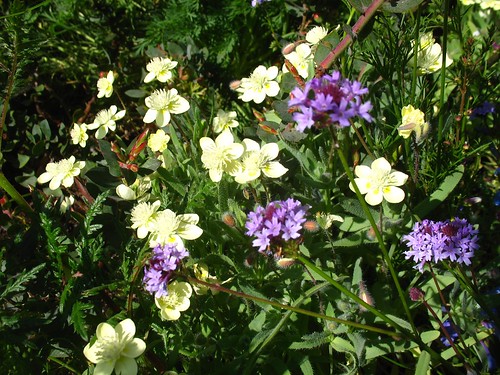

This Five-Spot (
Nemophila maculata) gets lots of supplemental water because it's growing in a pot of tomatoes. Hopefully that translates into more self-sowing.
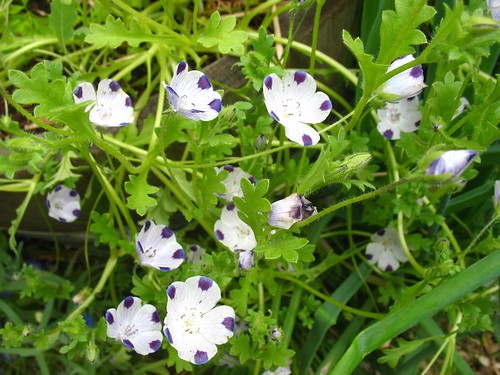
I'm not entirely sure what the rhythm of California wildflowers blooming in nature is like--well, all at once, I guess (except for
Clarkia which start next month)--or whether I should really expect it to be the same in my garden, but the
Gilia tricolor is just getting started.

It's hard to describe fragrances, but it reminds me of hyacinth, tho' much lighter.

The
Phacelia tanacetifolia is getting so large that I have no choice but to start training it around a nearby tomato cage.


The Camassia may have the shortest bloom period of any plant in my garden--which is fine with me.
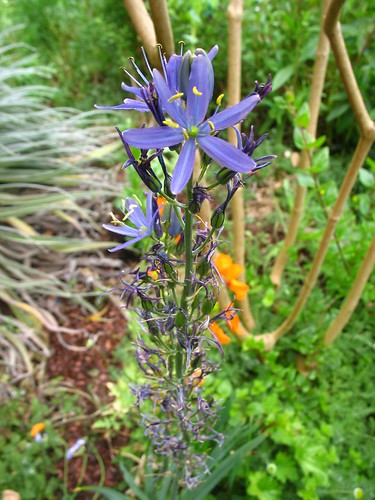
I grew several CA-native perennial bunch grasses from seed this year, but they're hard to photograph. Here you can see the nodding stems of purple needle grass (
Nasella pulchra in the background, with
Salvia spathacea and
Ceanothus 'Frosty Blue'.
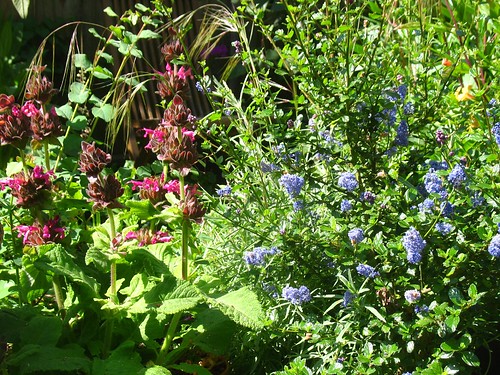
A different
spathaceae next to
Fremontodendron and lupine.

I think it's 'Kowatre'.

More exciting next to Fremontodendron, at least to the bees, is the Cerinthe major which is only now developing the kind of ink-dipped purple tips this hardy annual is famous for.

Seriously, if I want to find a bee in my garden, this is the place to look. The flowers are
constantly buzzing.
Will the bees also buzz around the foxglove? The
Digitalis purpurea 'Apricot Beauty' are right on the cusp of blooming, so we'll find out soon enough.

Their little flower buds seems so grim and determined not to bloom. I think the foxglove must be very competitive for water. The soil seems unusually dry wherever they're growing and they're doing much better than neighboring plants.

I'm starting to think about what to replace them with after they die. I planted
Anisodonaea capensis behind one foxglove.

It's neighbor will be another mallow, the white abutilon.

The Fuchsia boliviana 'Alba' has two big flower clusters.

Some of the flowers are fading, and several new buds are coming. It's one of those plants that can have buds, flowers, and fruit at the same time all year long.

But it seems to have developed a nutrient deficiency.

Some of the leaves are yellowing from the mid-vein out. Any ideas? My first thought was nitrogen since it's growing in a big pot. I've added dilute fish emulsion twice in the last few months. I don't think it's P or K. Could it be Mg or Ca? It's getting more sun than it probably wants; maybe it's too much sun.





